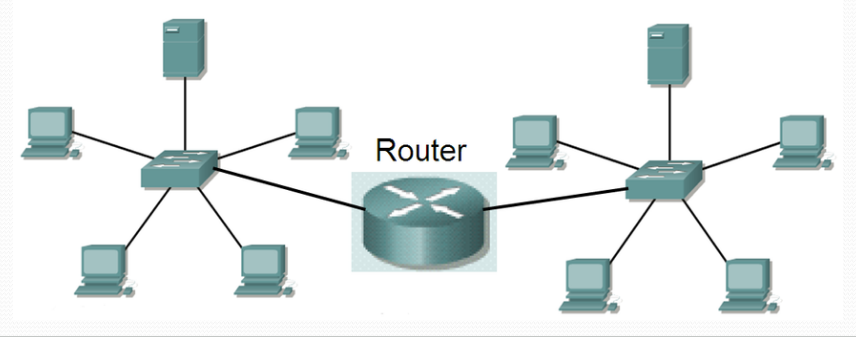Router

A Router is a networking device used to connect multiple networks and direct data packets between them. It operates at the Network Layer (Layer 3) of the OSI model and makes decisions based on IP addresses.
History & Manufacturers
- The first commercial router was developed by Cisco Systems in 1984.
- Today, many companies manufacture routers, including Juniper, MikroTik, Huawei, TP-Link, and Netgear.
Functions & Characteristics
- Network Interconnection – Connects different networks such as LAN to WAN or LAN to LAN.
- Broadcast Domain Separation – Prevents unnecessary broadcast traffic between networks.
- Best Path Selection – Uses routing tables and routing protocols to determine the most efficient path to a destination.
- Packet Forwarding – Directs data packets toward their destination based on IP addresses.
- Packet Filtering – Implements Access Control Lists (ACLs) and firewall features to control traffic.
- Protocol Support – Can handle multiple protocols such as TCP/IP, OSPF, EIGRP, BGP, etc.
Internal Hardware of a Router
Routers consist of several key hardware components that enable them to process, store, and forward data efficiently:
- Processor (CPU) – Executes the router’s operating system (IOS) and manages routing functions.
- Motherboard – The main circuit board that houses all essential components and connections.
-
RAM (Random Access Memory) –
- Stores running configurations, routing tables, and packet buffers.
- Data is erased when the router is powered off or restarted.
-
NVRAM (Non-Volatile Random Access Memory) –
- Stores the startup configuration file.
- Retains data even when the router is powered off.
-
Flash Memory –
- Stores the Cisco IOS (Internetwork Operating System) and other system files.
- Non-volatile, meaning data is retained after a reboot.
Interfaces of a Router
Routers provide multiple interfaces for management, communication, and network connectivity:
- Console Port – Used for local management and configuration via a direct serial connection.
- AUX (Auxiliary) Port – Allows remote management via a modem connection.
- Ethernet / FastEthernet / GigabitEthernet Ports – Network interfaces for LAN and WAN connectivity, supporting speeds of 10 Mbps, 100 Mbps, and 1 Gbps respectively.
- Serial / Smart Serial Ports – Used for WAN connections (e.g., point-to-point links).
- SFP (Small Form-factor Pluggable) Slots – Supports fiber optic or high-speed copper transceivers for scalable network connections.
- USB Ports – Used for IOS upgrades, configuration file transfer, or additional storage.